When it comes to tattoos, there are countless designs and symbols to choose from. One such symbol that has gained popularity in recent years is the upside-down cross tattoo. But what does this symbol really mean? In this article with Impeccable Nest, we’ll explore the history and meaning of the upside-down cross tattoo.

What is an Upside Down Cross Tattoo?
An upside-down cross tattoo is a tattoo of a cross that is inverted, with the crossbar pointing downwards. This is in contrast to a traditional cross tattoo where the crossbar points upwards. The upside-down cross is also sometimes referred to as the inverted cross.
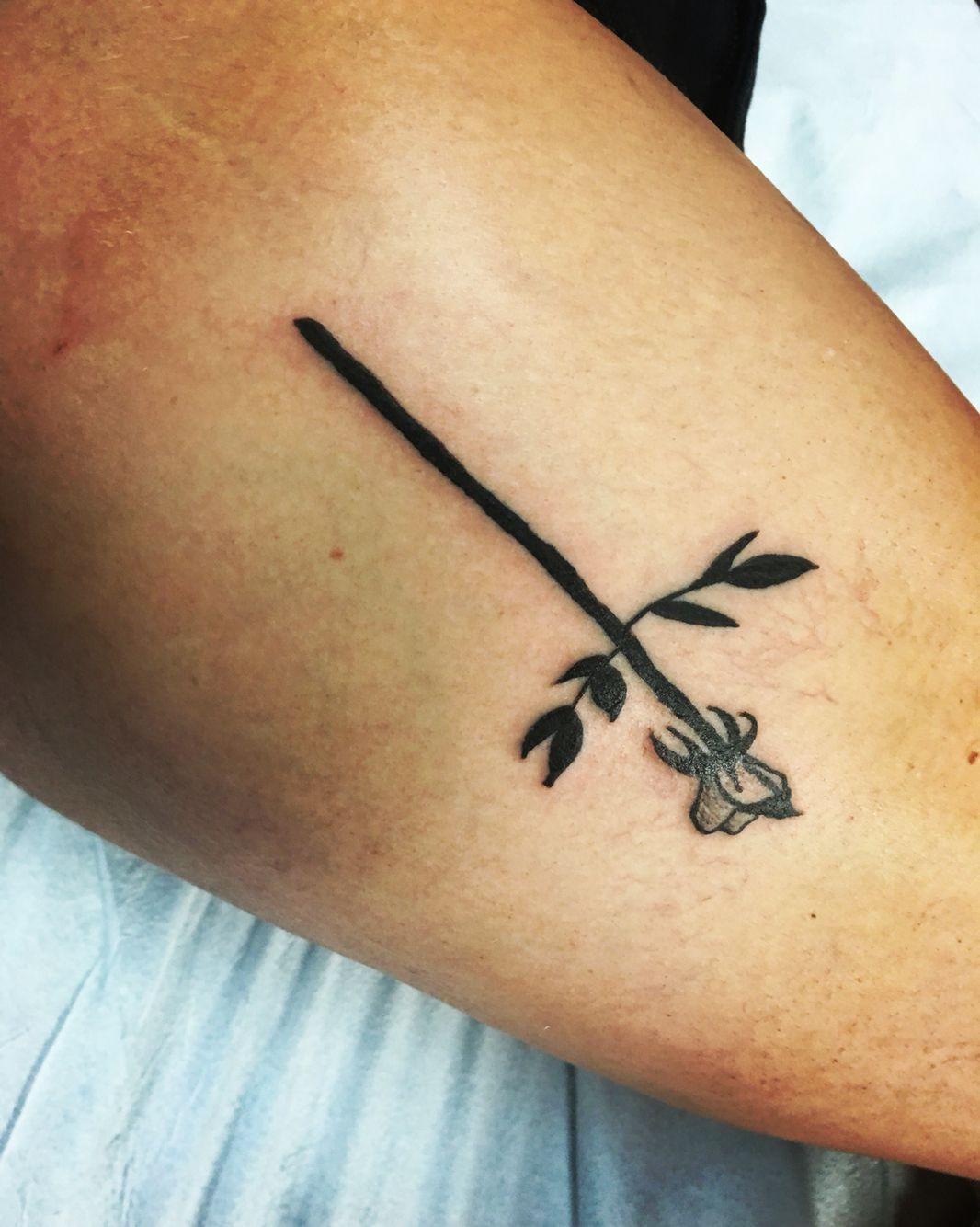
History of the Upside Down Cross Tattoo
The history of the upside-down cross tattoo dates back centuries. In the early days of Christianity, the symbol of the cross was used as a visual representation of the religion. However, as time went on, the use of the cross became more complex and nuanced.
During the Middle Ages, the upside-down cross began to take on a negative connotation. It was associated with the idea of “inversion,” which was believed to be a practice of Satanism and witchcraft. This association between the inverted cross and evil continued into the modern era, with the symbol being used in popular culture to represent everything from heavy metal music to horror movies.
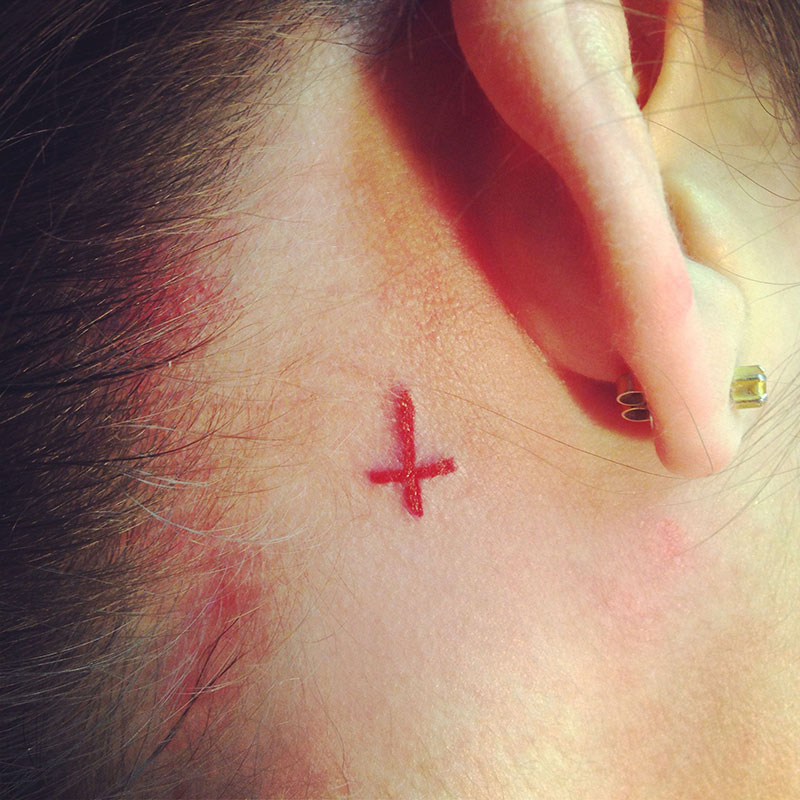
Despite its negative associations, the upside-down cross tattoo has also been embraced by some as a symbol of rebellion and non-conformity. In recent years, it has become increasingly popular among young people who are looking for ways to express themselves and their beliefs through body art.
Upside Down Cross Tattoo Meaning: Unveiling the Mystery
The meaning of an upside-down cross tattoo can vary widely depending on the context and the individual’s intentions. It’s important to note that the upside-down cross has different associations in different cultures and belief systems. Here are some common interpretations:
Anti-Christian or Satanic Symbolism
The Upside Down Cross Tattoo is a symbol that has long been associated with anti-Christian sentiments and Satanism. The cross itself is one of the most recognizable symbols in Christianity, representing the crucifixion of Jesus Christ. It is a powerful and sacred image for Christians worldwide.
However, when the cross is turned upside down, it takes on a completely different meaning. An upside-down cross can be seen as a symbol of defiance against traditional religious beliefs, particularly Christianity. It represents a rejection of Christian teachings, and an embracing of alternative belief systems or even atheism.
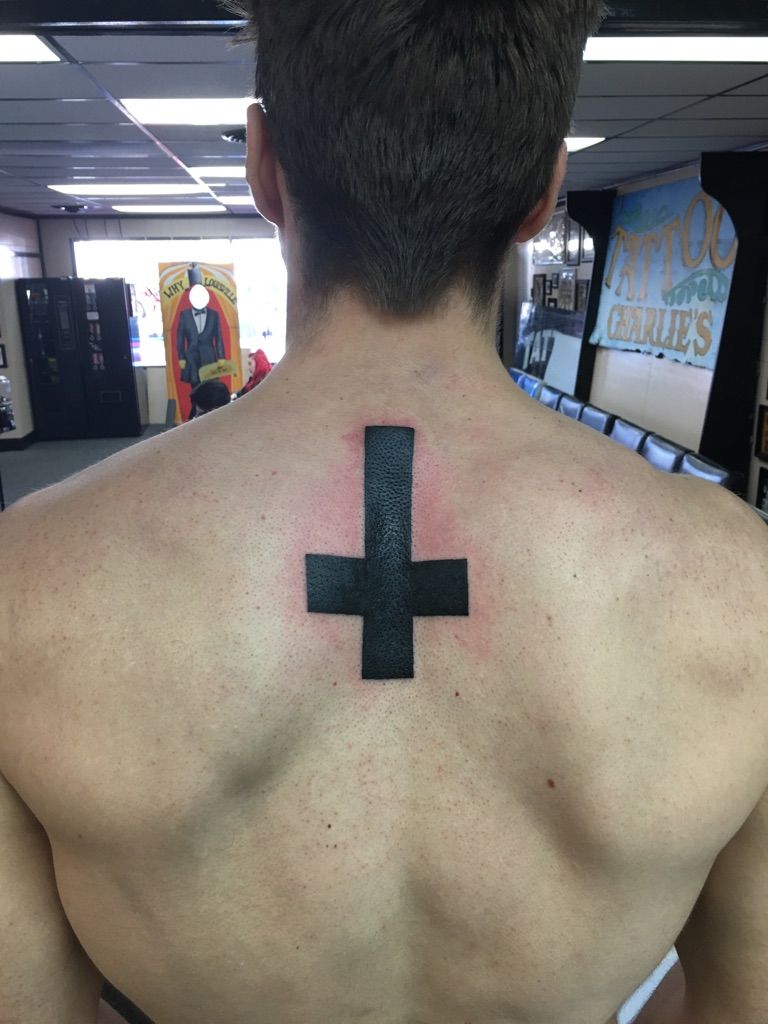
For many people, getting an upside-down cross tattoo is a way to express their dissent from mainstream religion. They may see themselves as rebels or non-conformists who reject the authority of organized religion. In some cases, they may also view the tattoo as a way to challenge the status quo and provoke others who hold different beliefs.
But while the upside-down cross tattoo can be a powerful symbol of individuality and rebellion, it is also highly controversial. Many people still associate the symbol with Satanism and other dark forces, which can lead to misunderstandings and misconceptions about the wearer’s intentions. Some may even view it as a sign of disrespect towards Christianity and its followers.
Rebellion or Counterculture
The upside-down cross tattoo meaning is a subject of debate and interpretation, as it can hold different meanings for different individuals. However, one of the most common interpretations of this symbol is that it represents rebellion or counterculture.
The upside-down cross is a reversal of the traditional Christian cross, which has been used as a symbol of Christianity for centuries. It is believed to have originated from the story of Saint Peter, who was said to have been crucified upside down because he did not feel worthy of being executed in the same manner as Jesus Christ.
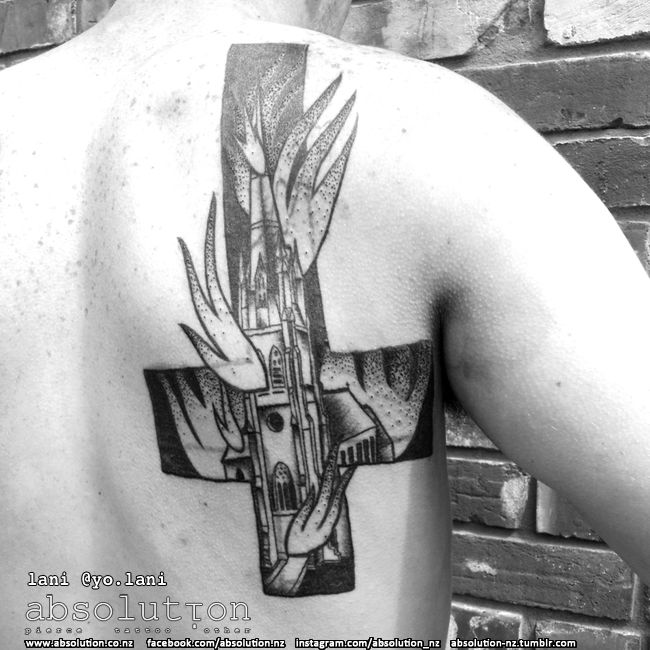
In recent times, the upside-down cross has been adopted by various subcultures as a symbol of their rejection of mainstream beliefs or norms. It may serve as a representation of a desire to challenge societal expectations or authority, with some viewing it as a statement against organized religion or a political system.
For example, some people who identify as Satanists may use the upside-down cross tattoo as a way to express their beliefs or affiliation with Satanic ideologies. In this context, the inverted cross represents an opposition to Christianity and a rejection of its teachings and values.
Similarly, those who identify with the punk rock movement may also use the upside-down cross as a rebellious symbol, signifying their rejection of conformist ideals and mainstream culture. The tattoo might represent a desire to stand out, be unique, and challenge the status quo.
However, it’s important to note that the upside-down cross tattoo meaning is not limited to just these specific groups or movements. The interpretation of the symbol can vary significantly depending on one’s personal beliefs, cultural background, and social context.
Personal Interpretation
The upside-down cross tattoo is a symbol that has been used to represent many different things over the years. While it is often associated with Satanic or occult beliefs, the meaning of this tattoo can actually be deeply personal and unique to the individual wearing it. One of the most common interpretations of this tattoo is that it represents a personal journey or spiritual exploration.
For some people, getting an upside-down cross tattoo might be a way of expressing their dissatisfaction with traditional religious beliefs. They may feel that the mainstream teachings of their faith are too restrictive or dogmatic, and that they need to explore alternative paths in order to find true spiritual fulfillment. For these individuals, the upside-down cross may represent a rejection of the established order and a search for something deeper and more meaningful.
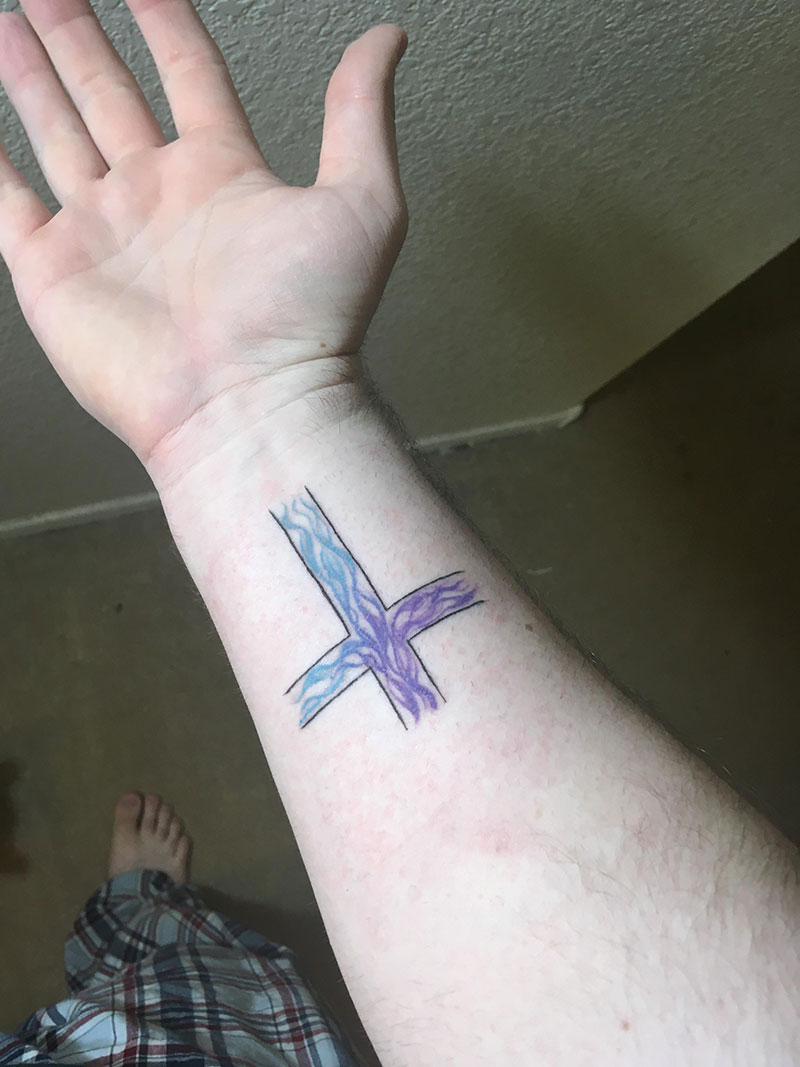
Other people may choose to get an upside-down cross tattoo as a statement of their own personal beliefs. This could include anything from atheism to agnosticism to various forms of non-traditional spirituality. By wearing this tattoo, they are making it clear that they do not subscribe to the beliefs and practices of mainstream religions, and that they are committed to forging their own path in life.
Of course, the meaning of an upside-down cross tattoo can also be purely aesthetic. Some people may simply like the look of the symbol and choose to get it tattooed on their bodies without any particular symbolism attached to it. In these cases, the tattoo serves as a form of self-expression and body art rather than a reflection of any specific beliefs or values.
Inversion of Symbolism
The upside-down cross tattoo has gained popularity in recent years, particularly among individuals who seek to convey an alternative perspective on traditional religious symbols. While the inverted crucifix may hold negative connotations for some, others view it as a powerful symbol of rebellion against oppressive religious institutions.
One interpretation of the upside-down cross tattoo is rooted in the idea of inversion. The cross, which traditionally represents sacrifice and redemption, is turned on its head, challenging the viewer’s perceptions of what the symbol represents. Some individuals use this inversion as a way to subvert the traditional meaning of the cross, choosing instead to embrace a more rebellious or unconventional worldview.
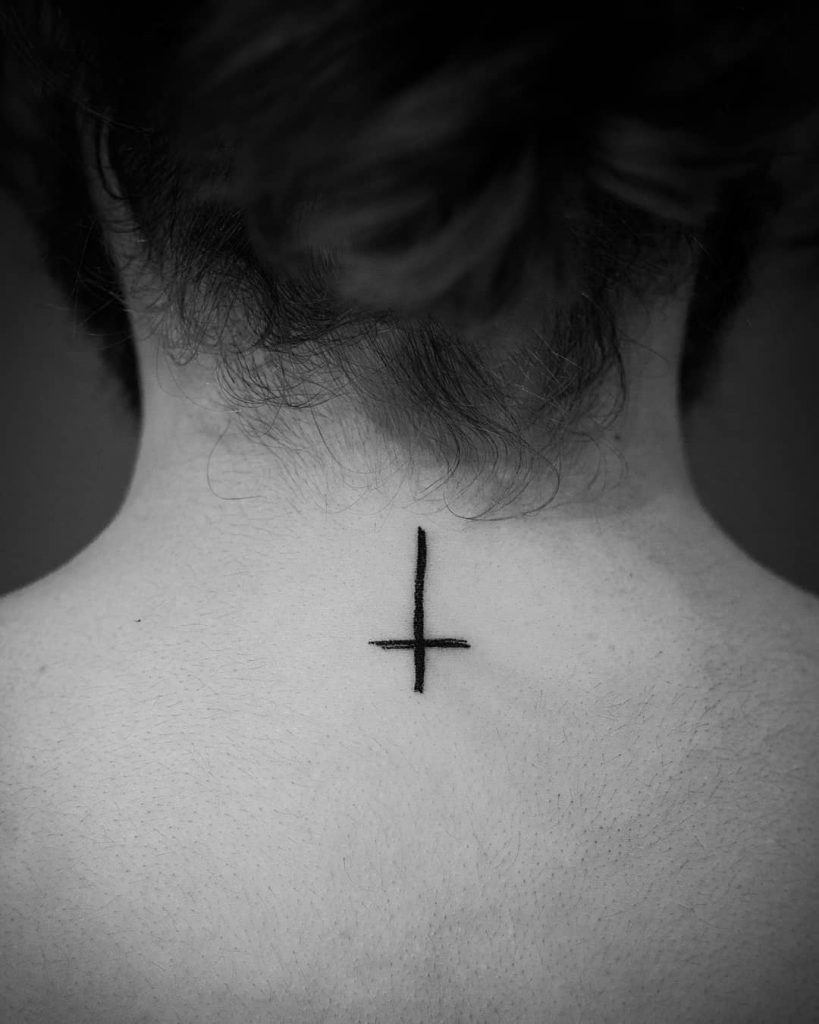
For many, the upside-down cross tattoo also serves as a form of artistic expression. By taking a well-known religious symbol and altering it in such a way that it becomes something entirely new, individuals can create a unique piece of body art that speaks to their personal beliefs and values. In some cases, the tattoo may even serve as a political statement, challenging the status quo and calling attention to issues of social justice or inequality.
Despite its growing popularity, the upside-down cross tattoo remains controversial within certain religious communities. Some view it as a sign of blasphemy or disrespect towards their faith, while others see it as a way of rejecting oppressive religious institutions that they believe have become corrupt over time. For those who choose to wear the symbol, however, the upside-down cross tattoo holds powerful meaning and significance, representing a deeply personal expression of identity, belief, and rebellion.
Artistic or Aesthetic Choice
The upside-down cross tattoo is a popular symbol in tattoo culture and has gained popularity in recent years. While traditionally associated with satanic or anti-Christian symbolism, the meaning of this particular tattoo can vary depending on the individual wearing it.
In some cases, individuals might choose an upside-down cross tattoo for its visual and aesthetic appeal without intending a specific symbolic meaning. It can be used as a creative design element, allowing the wearer to express their personal style and creativity through body art.
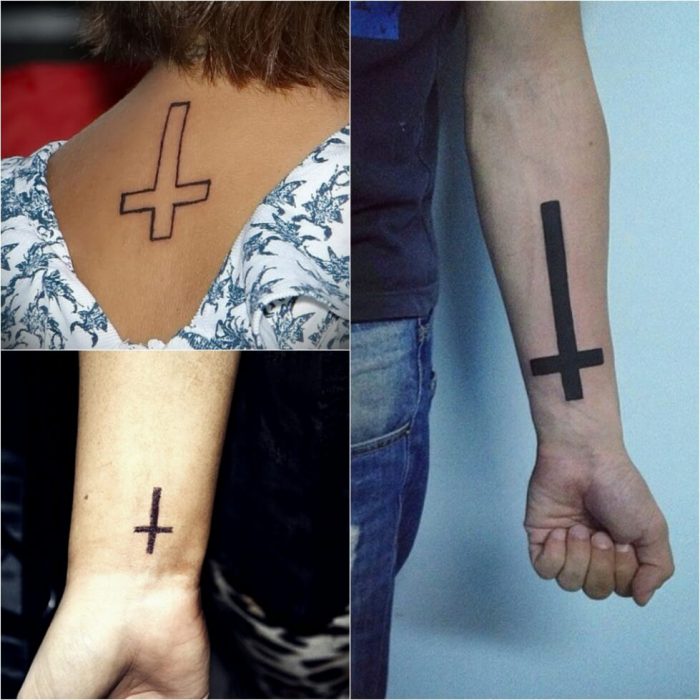
However, for others, the upside-down cross tattoo carries deeper symbolic significance. The inverted cross is often seen as a symbol of rebellion against conventional religion and the traditional values associated with it. This meaning is particularly popular among those who identify with alternative or counterculture movements.
Another interpretation of the upside-down cross tattoo is that it represents the idea of sacrifice. According to Christian tradition, Saint Peter was crucified upside down as a sign of humility and unworthiness compared to Jesus Christ. As such, the upside-down cross can be seen as a way to honor the martyred saint and his willingness to suffer for his beliefs.
For some individuals, the upside-down cross tattoo may also represent a rejection of authority or the status quo. By inverting the traditional symbol of Christianity, these individuals are expressing their desire to challenge and subvert established power structures and social norms.
Historical and Cultural References
The upside-down cross is a symbol that has been used in various contexts throughout history and across cultures. One of the most commonly recognized uses of this symbol is within Christianity, where it’s often associated with Satanism or other forms of heresy.
However, the origins of the upside-down cross predate Christianity. For example, in ancient times, it was used as a symbol of the goddess Artemis, who was often depicted holding a crossbow. The cross itself was a symbol of the four elements (earth, air, fire, water) and the intersection of the divine and earthly realms.

In Christianity, the upside-down cross is traditionally associated with the martyrdom of St. Peter, who was crucified upside down because he felt unworthy to die in the same way as Jesus. As such, the upside-down cross can be seen as a symbol of humility and sacrifice.
However, the use of the upside-down cross has also been associated with heresy and rebellion. In the Middle Ages, it was often used by witches and other practitioners of the occult as a symbol of their rejection of traditional Christian beliefs. This association continued into modern times, where it has been adopted by some heavy metal musicians and other countercultural groups as a symbol of their rejection of mainstream society.
It’s important to remember that the meaning of the upside-down cross is not fixed or universal. Its interpretation is influenced by historical and cultural context, as well as personal associations and beliefs. For some, it may represent rebellion and nonconformity, while for others, it may symbolize sacrifice and devotion. It’s also worth noting that some people may simply find the upside-down cross aesthetically pleasing, without any particular attachment to its underlying symbolism.
Provocation and Shock Value
The upside-down cross tattoo has been a symbol of controversy and intrigue for many years. This particular type of cross is also known as the inverted cross or the cross of Saint Peter. In Christianity, it is said that Saint Peter was crucified on an upside-down cross because he didn’t feel worthy of dying in the same way as Jesus Christ.
However, in modern times, the upside-down cross has been adopted by those who want to challenge societal norms or provoke a reaction. It has been used by different groups with varying interpretations.
For some, the upside-down cross can be seen as a symbol of rebellion against traditional religious beliefs. It might be used to express a rejection of organized religion or to challenge the authority of the church. Some people who identify as atheists or agnostics might choose to get an upside-down cross tattoo as a way to show their lack of belief in God.
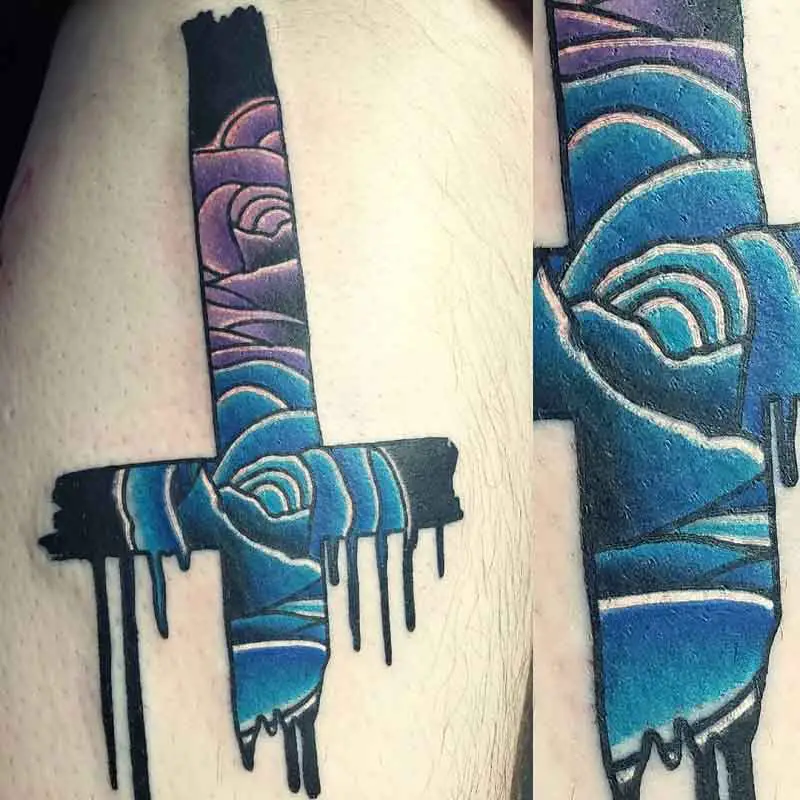
On the other hand, there are also those who see the upside-down cross as a symbol of personal sacrifice and humility. They interpret the cross of Saint Peter as a sign of humility and acceptance of one’s own imperfection. These individuals might wear an upside-down cross tattoo as a reminder to remain humble and to avoid becoming too caught up in their own ego.
Regardless of the specific interpretation, an upside-down cross tattoo is likely to spark conversations about religious beliefs and societal norms. Some might view it as a provocative or offensive symbol, while others might see it as a powerful statement of individualism and personal belief.
It is important to remember that tattoos have personal significance and meaning for each individual who chooses to get one. While certain symbols or images might hold broader cultural or historical meanings, ultimately, the meaning of a tattoo lies in the intention of the person wearing it.
Given the potential for different interpretations and the sensitivity surrounding religious symbols, it’s essential to carefully consider your intentions before getting an upside-down cross tattoo. If you are considering this tattoo, take time to reflect on your personal beliefs, values, and the message you wish to convey. Additionally, be aware that the tattoo may be misunderstood or misconstrued by others, so you might need to explain its significance if you choose to share it openly.
Different Interpretations of the Upside Down Cross Tattoo
As we mentioned earlier, there are many different interpretations of the upside-down cross tattoo. Some people see it as a symbol of rebellion or anti-Christian sentiment, while others view it as a way of honoring Saint Peter and his sacrifice. Here are a few more interpretations that you might find interesting:
- The Upside-Down Cross as a Symbol of Humility: According to some interpretations, an upside-down cross can be seen as a symbol of humility. By wearing this symbol, individuals are acknowledging their own imperfections and limitations, and showing a willingness to learn from others.
- The Upside-Down Cross as a Symbol of Empowerment: For others, the upside-down cross represents empowerment and self-determination. By wearing this symbol, individuals are asserting their own agency and independence, and rejecting societal expectations and norms.
- The Upside-Down Cross as a Sign of Protest: Finally, some people choose to wear an upside-down cross as a way of protesting against religious institutions and traditions. They may see these institutions as oppressive or outdated, and use the symbol of the inverted cross to make a statement about their beliefs and values.
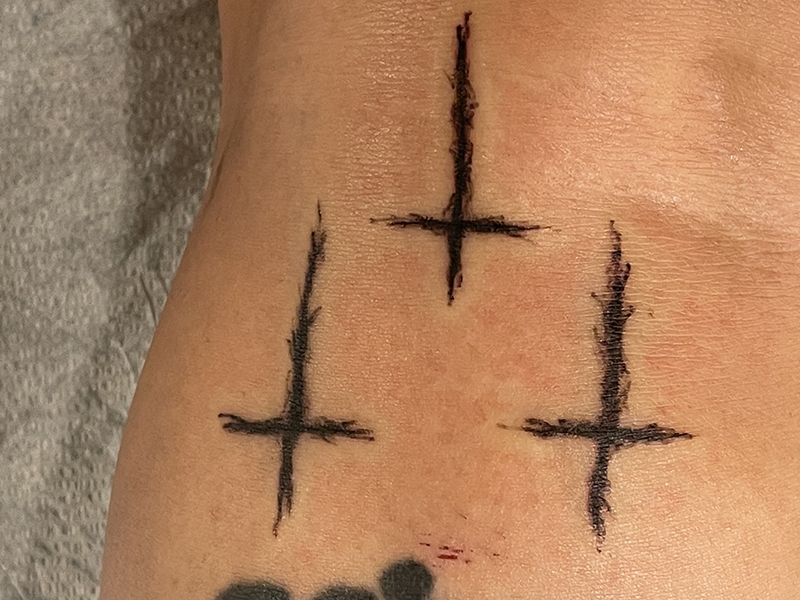
Conclusion: Upside Down Cross Tattoo Meaning
The meaning behind an upside-down cross tattoo is complex, nuanced, and ultimately depends on the individual who wears it. Whether you see this symbol as a sign of rebellion, humility, or something else entirely, one thing is clear: the upside-down cross has a long and fascinating history ,and has been interpreted in many different ways over the years. As with any tattoo design, it is important to consider your own motivations and intentions before getting an upside-down cross tattoo. Make sure that you understand the potential meanings behind this symbol and are comfortable with the message that it may send.
In the end, a tattoo is a deeply personal choice, and what is meaningful or symbolic for one person may not be the same for another. If you are considering an upside-down cross tattoo, take the time to explore its history and symbolism, and make sure that you are making a decision that reflects your own beliefs and values.

I am Harvey Berry, a tattoo enthusiast who has immersed himself in the diverse world of ink, passionately exploring the beauty and artistry within each tattoo. My mission extends beyond uncovering the aesthetics of tattooing; it involves sharing in-depth knowledge across all aspects of this art form.
Fueled by genuine curiosity and love for every facet of tattooing, I have diligently crafted well-researched articles, with a special focus on the Tattoo Meaning of Impeccable Nest section. Here, my aim is to help the tattoo community gain a deeper understanding of the meanings and values embedded in each tattoo.
One of my primary goals is to encourage responsible decision-making when it comes to getting inked. I recognize that choosing to get a tattoo is a significant personal decision that requires careful consideration. Hence, I provide diverse resources covering the meaning of tattoos, the tattooing process, aftercare tips, and other valuable information.
Whether you are a seasoned tattoo enthusiast or embarking on your first exploration of the world of body art, I aspire to be a reliable resource for you at every step of your journey. I hope that my extensive knowledge of tattoos, especially in the Tattoo Meaning section, will assist you in finding inspiration to express yourself through the art of tattoos.
